Châtel-Guyon will host the 13th stage of the Tour de France
This year the 107th running of the Tour de France has a special interest to those of us who love the mountains and gorgeous landscapes of central France. The Tour will stop in my old hometown, Clermont-Ferrand, on Saturday, July 11th, where riders will set out on the 197 km (118 mile) trip to Lyon. But the day before (Friday, July 10th), they will first have to tackle one of the Tour’s famous mountain passages, starting in the beautiful spa town of Châtel-Guyon and climbing a total of 4,400 meters on a 191 km ride through a chain of volcanoes on the way to the Puy Mary in the Cantal.
That announcement brought to mind several memories of our experiences in this rugged corner of France. I first heard about Châtel-Guyon on my first full day in the office when we moved to France in 1998. My new chef, a formal gentleman from the classic French school of management, was asking if we had found a place to live, and he had a recommendation: Châtel-Guyon, on the other side of the mountains north of Clermont-Ferrand in the Auvergne. “It’s like a smaller version of Vichy,” he said with a little sniff. “After you’ve been around the smell of the factories here all day, it’s good to escape back into the fresh air!”
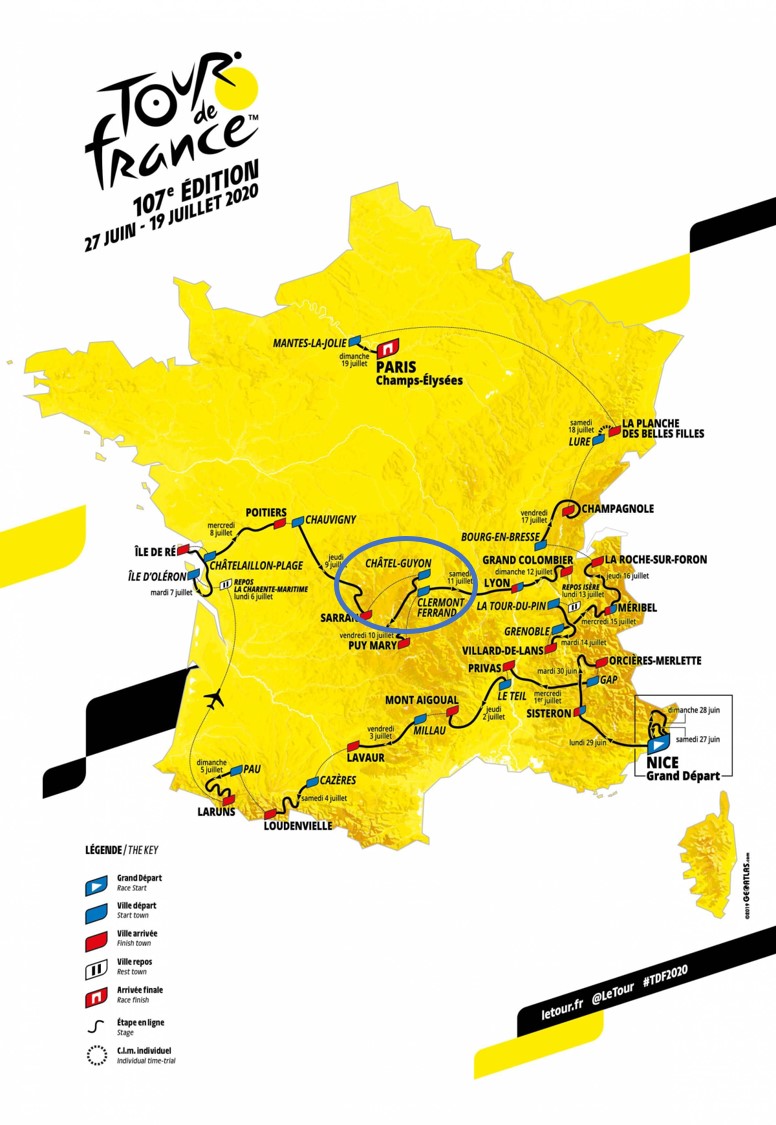
We eventually found a different place to live, but the image of Châtel-Guyon as a kind of upper-crust getaway stuck in my mind. Over the years, we had occasion to go there several times – for a week-long management meeting in the Hotel Splendid (which is not actually so “Splendid” these days), for someone’s retirement party, or for an occasional dinner in one of the brasseries that line the town’s main streets. We spent a memorable winter evening in one of those restaurants listening to a member of my team from work playing in a very good Dixieland jazz band.
A historic castle that lives only in memory
So it was not all “new” to me when I went back on a gorgeous Sunday morning to get reacquainted with Châtel-Guyon. But I found several aspects of the life and history of this small spa town that frankly surprised me and gave me a new appreciation for the place.
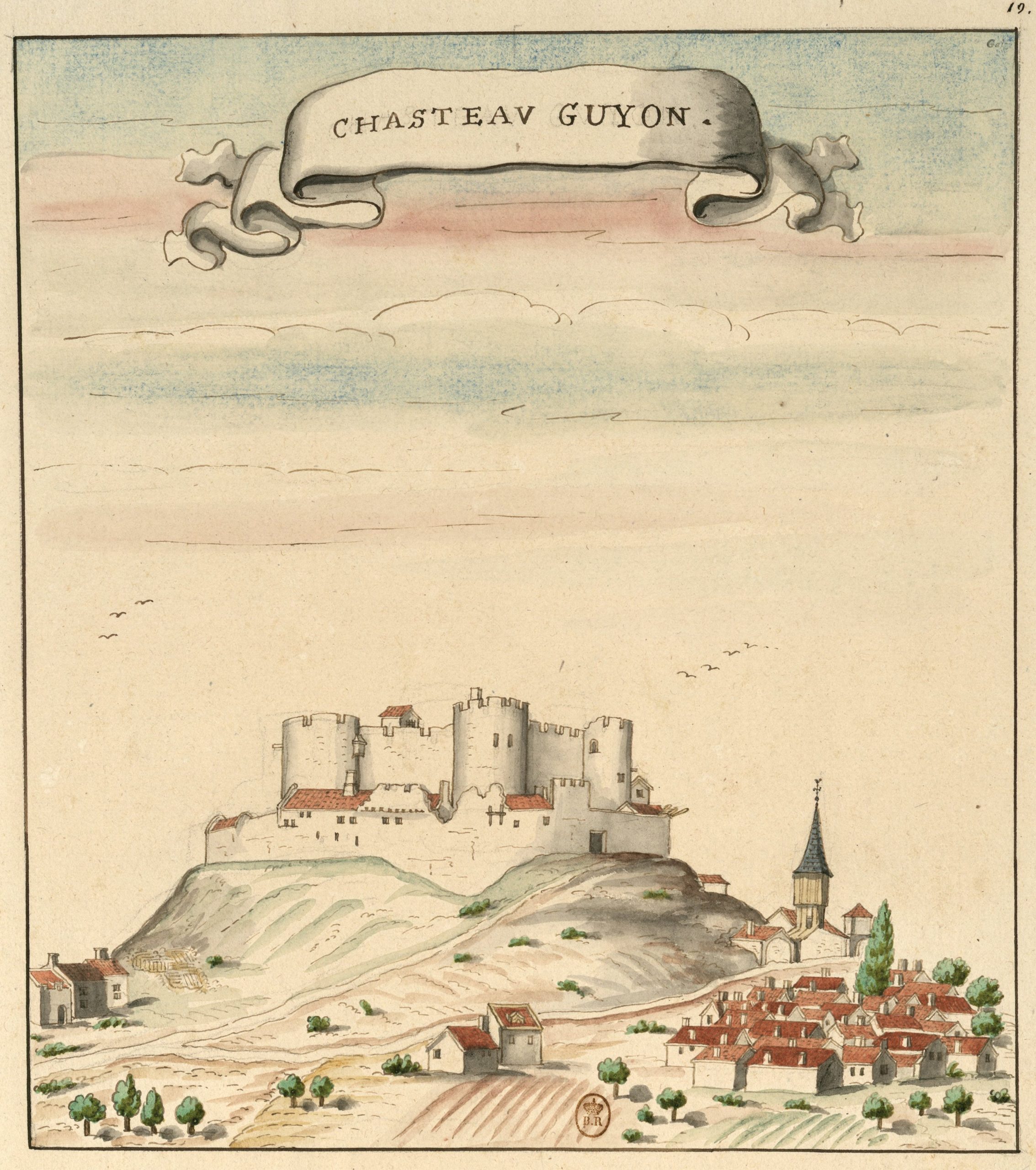
For one thing, most of the spa towns in this part of central France – places like King Louis XIV’s baths at Bourbon-l’Archambault and the Belle Epoque gem of Royat -- were organized around the presence of “sources” – the springs of hot water rich in minerals that have bubbled up from the volcanic substrate and have attracted people to this area since Gallo-Roman times. But while Châtel-Guyon is known almost exclusively as a “spa town” now, that’s not how it originated. It was actually the site of a major defensive fortress belonging to Count Guy II of Auvergne, a place where residents of this valley could come for protection. (And this “Castle of Guy” – “Castrum Guidonis” in Latin – is the source of the current town’s name.)
They probably needed the castle’s protection regularly, because Guy II is described in the history books as “fierce, independent, and bellicose”, and he was constantly at war with his brother Robert, the Bishop of Clermont. Count Guy was known to be a partisan of King Richard the Lionheart, who claimed authority over much of the Auvergne; Bishop Robert supported the French King Philippe Augustus. When King Philippe laid siege to Guy’s great castle at Tournoel in 1212 C.E., he won the battle, stripped Guy of all his possessions (including the fortress here at Châtel-Guyon) and claimed the County of Auvergne for the French crown.
Nothing remains of the great castle here; having stood watch over this valley for almost 600 years, it was finally torn down in 1595 C.E. Instead, there’s a barren hill (now called “Calvary”) rising above the town and dominated by an elaborate stone cross with a gilded image of Jesus placed here by missionaries in 1884. From this point you can see the whole incredible sweep of the landscape of the Auvergne -- across the great plain of Limagne (one of the richest “breadbaskets” of France) to the east, and back to the UNESCO World Heritage “Park of Volcanoes” stretching away to the southwest.
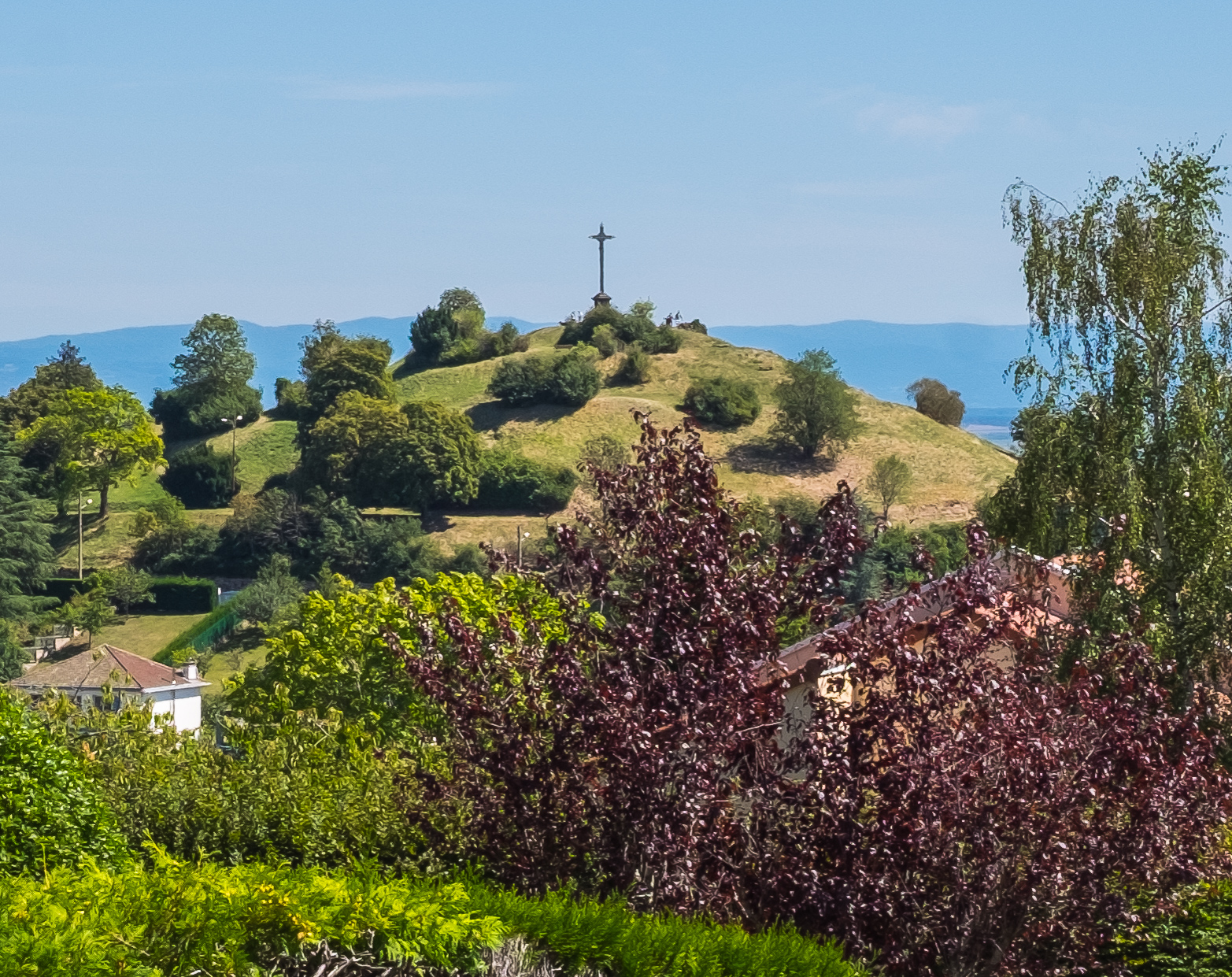
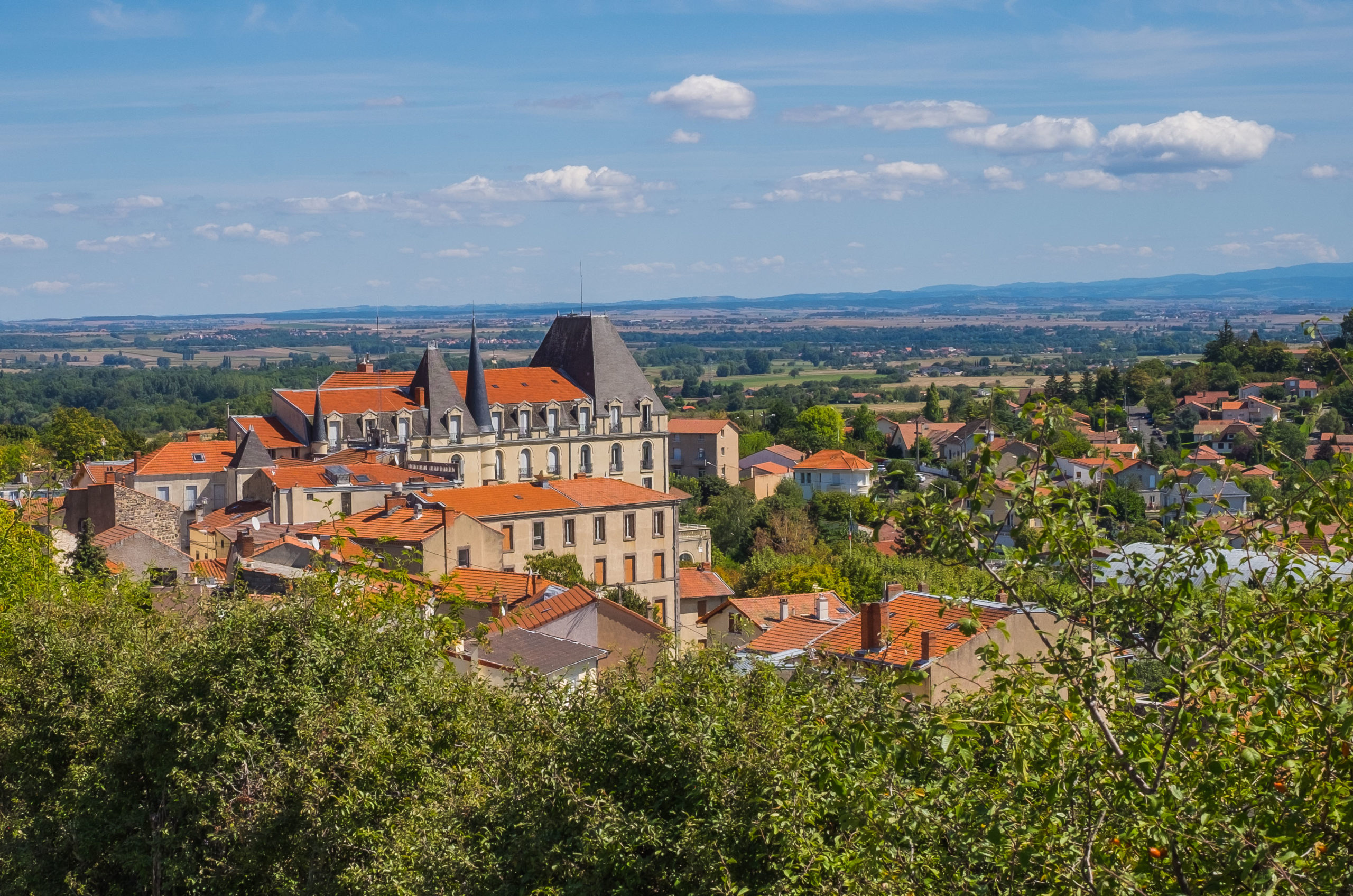
Spa town to the rich and famous
The more visible part of Châtel-Guyon’s history comes from the discovery of mineral water “sources” here in the late 1600s. Even though the “curative” properties of these springs were known as early as 1671 C.E., the town didn’t get around to building a formal bathing facility until 1817 – and even then, they apparently didn’t know how to fully exploit this natural resource. It wasn’t until the late 1800s that Châtel-Guyon was really “discovered” by tourists seeking “the cure”.
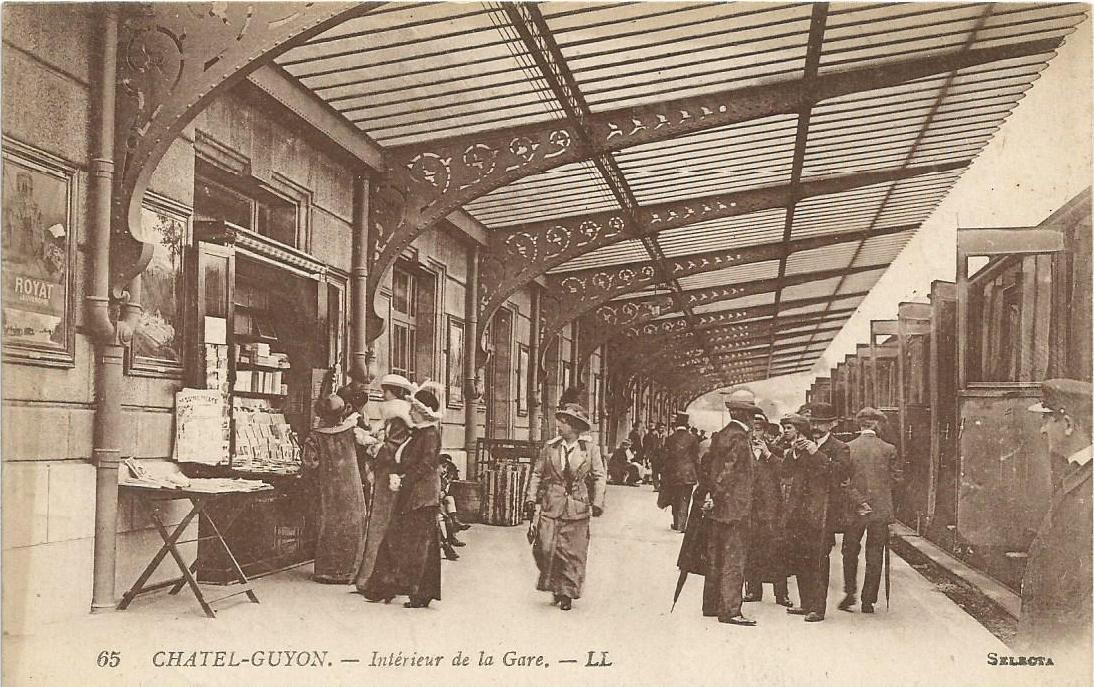
The novelist Guy de Maupassant came here frequently in the 1880s; he mentioned the town in several of his works, and actually set his novel Mont Oriol here. From the Belle Époque to the Roaring Twenties, as the local tourist bureau is proud to mention, the thermal stations were frequented by “sultans, Arab kings, the notables of Africa, and the Maharajahs of India.” The “crowned heads of Europe” made their way here, too, sampling the waters that are renowned as being “the richest in magnesium of any place in Europe.”
You can still see the evidence of this period in the town’s major attractions. The Theater and the Casino opened here in 1901 and were given a sumptuous update in 1908 by Édouard Niermans – he’s the architect responsible for the Moulin Rouge and the Casino de Paris in Paris. The main bathhouse – Les Grand Thermes – open in 1906.
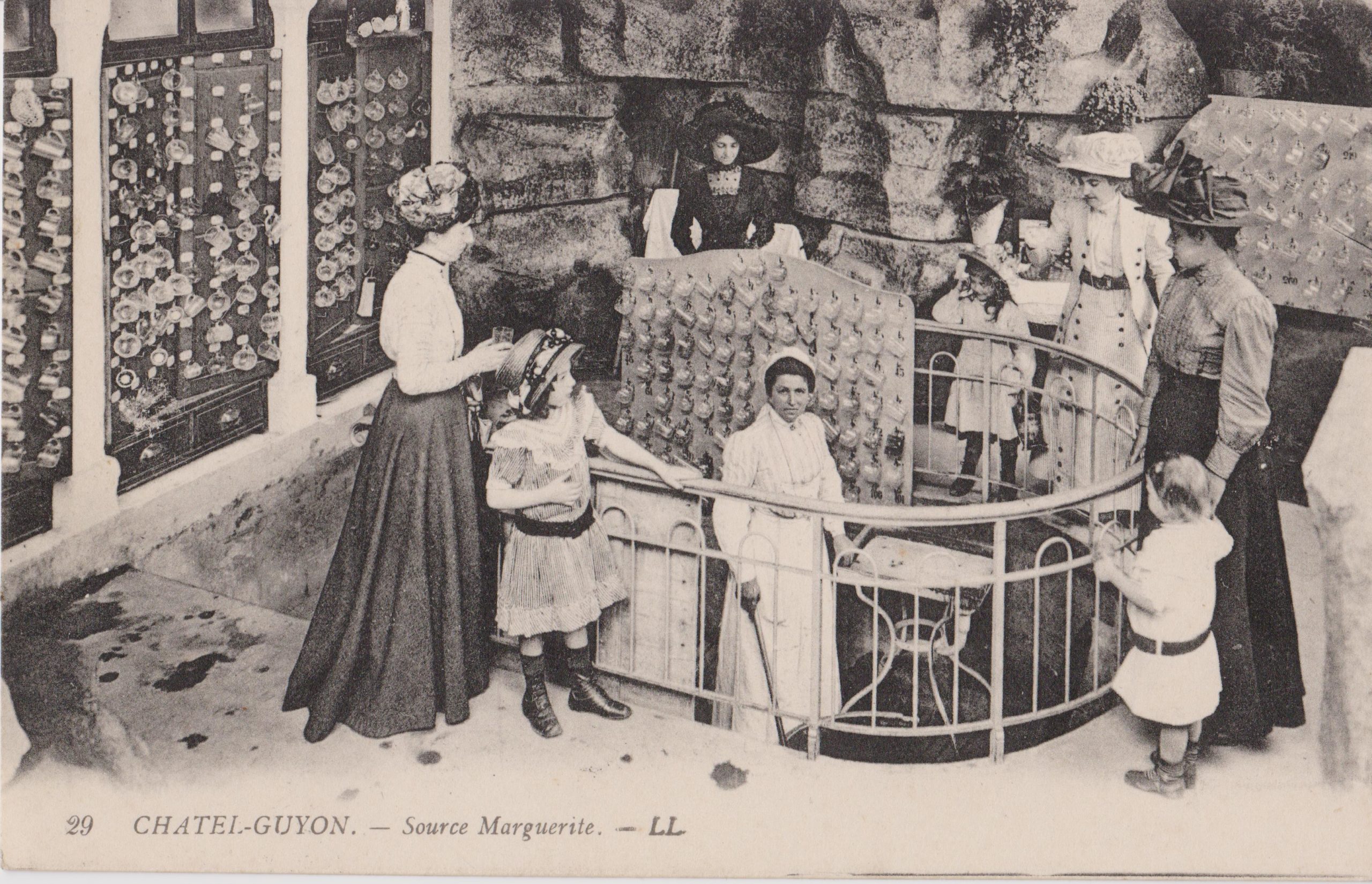
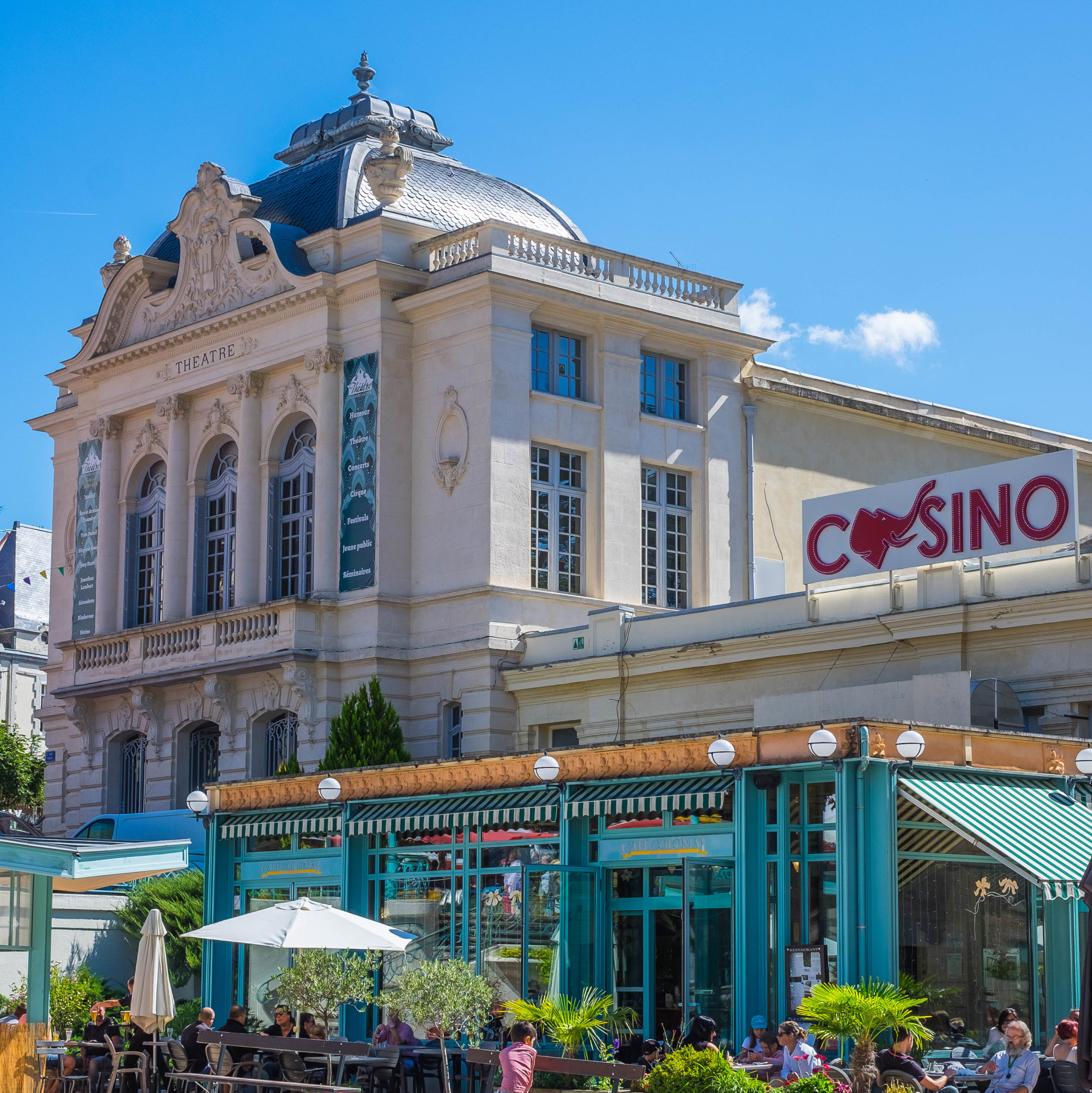
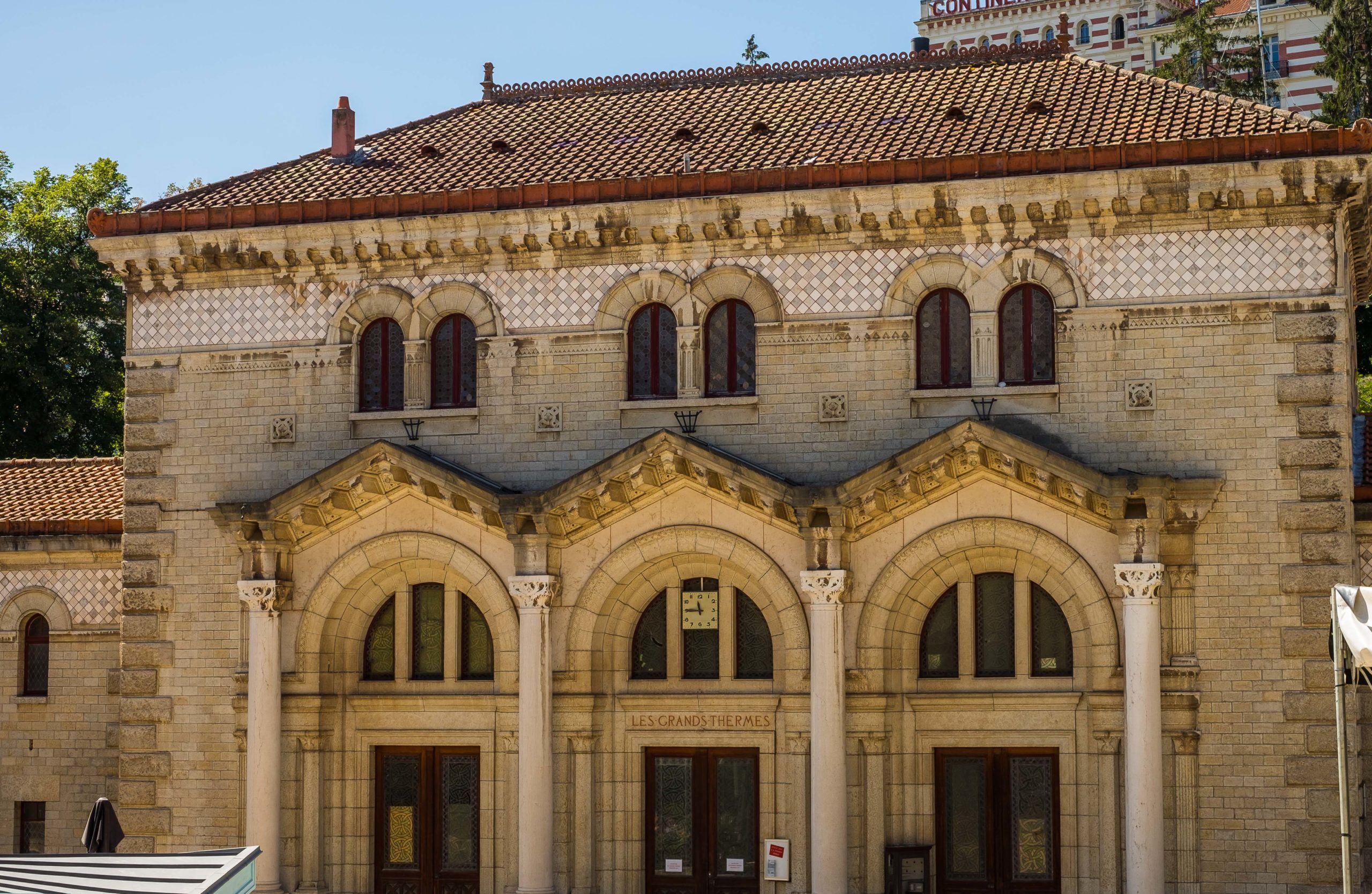
When you visit Châtel-Guyon today, you can still see all these grand old buildings, as well as the hotels and fine private townhouses built to accommodate this high-end tourism in the late 19th and early 20th century. But it’s important to note that not all of the spas are from that generation. There are several new establishments around town, and later this year (2020) the old Grand Thermes are moving into a luxurious new resort complex named Aïga.
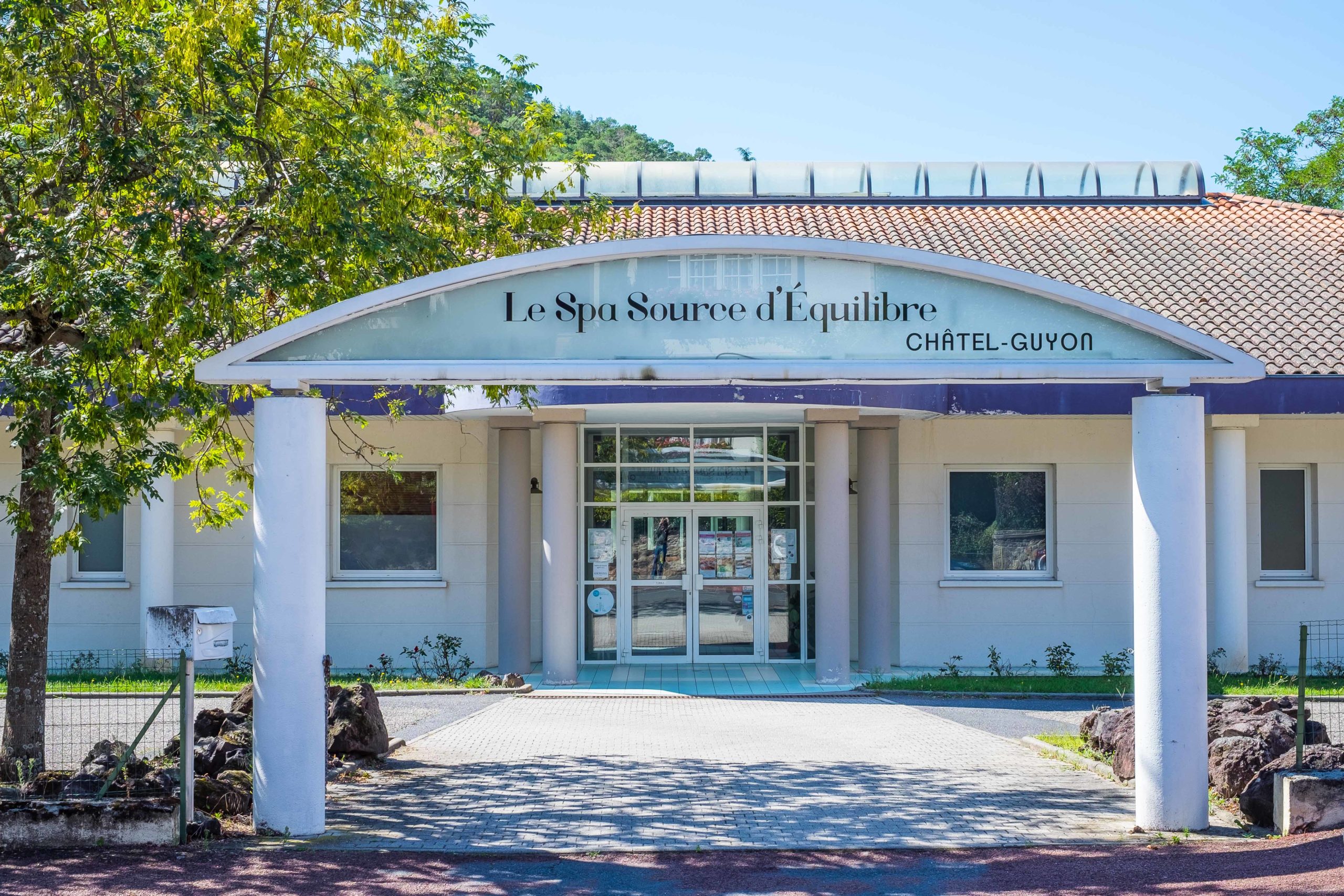
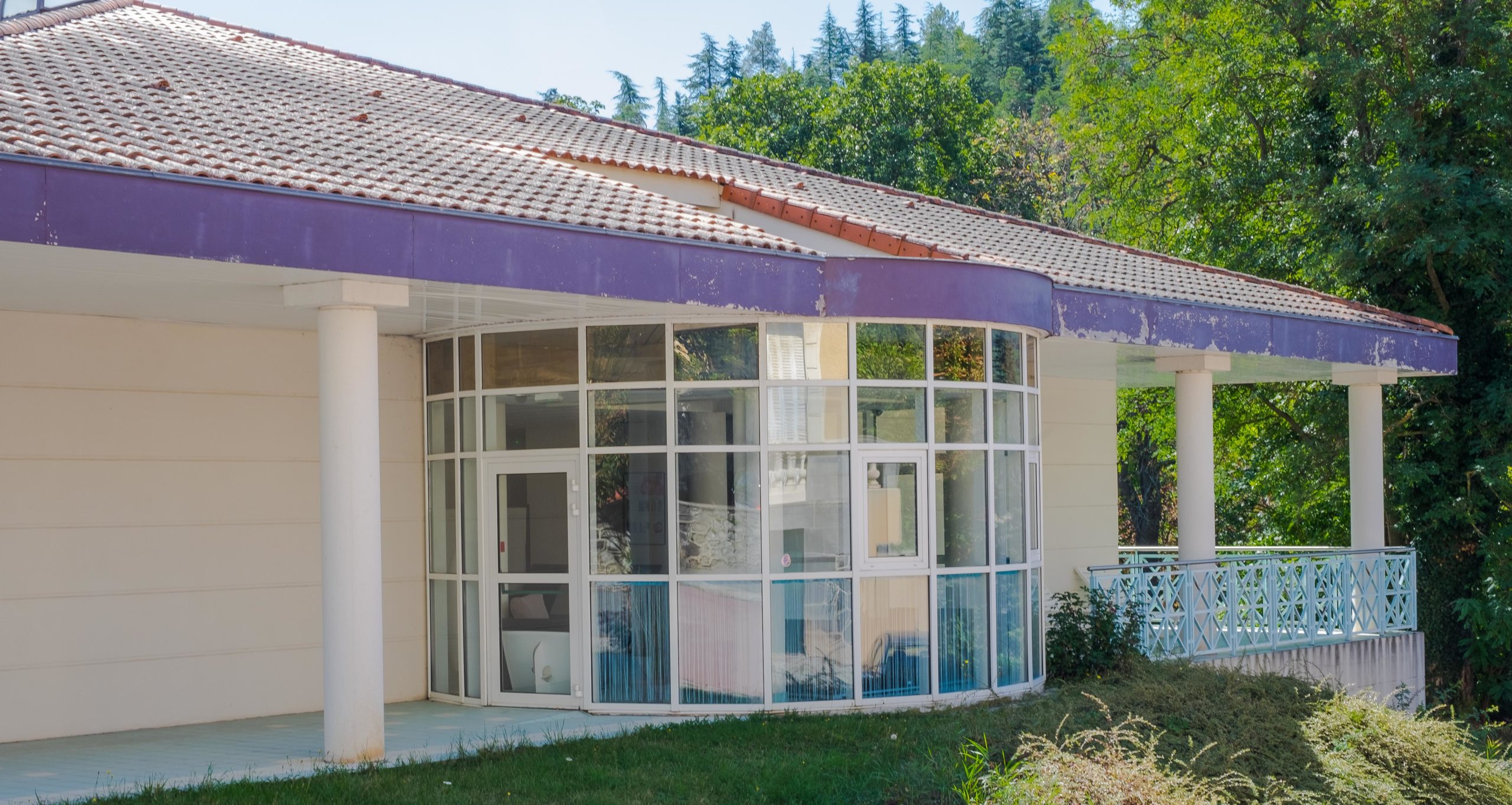
(You can still book a “cure” here, too! Some require a doctor’s prescription to get in, but several other “book-it-yourself” options are available. Because of the high magnesium content of the waters, they are especially commended to customers looking for help with digestive issues and rheumatism – but you can go, too, if you’re just looking to while away the afternoon in a fine hot bath.)
A connection to the U.S. Army
Even as Châtel-Guyon’s reputation as a spa for luxury tourism was established, though, western Europe was plunged into the violence and destruction of World War I. Given its distance from the great battle fronts in northeastern France, I was surprised to learn that this town is also known for having hosted the U.S. Army’s Base Hospital No. 20. Even before the United States entered the war in 1917, the University of Pennsylvania had started mobilizing money, staff, and medical resources in anticipation of the need, and Châtel-Guyon was an attractive location with lots of available hotel rooms and other buildings that could serve as hospital quarters.
The facility opened in 1918 with 22 doctors, 2 dentists, 65 nurses, a chaplain, and 153 enlisted men. In only one year of operation in Châtel-Guyon, Base Hospital No. 20 treated American and French battlefield casualties coming from places like Verdun and the Argonne; they even treated some German prisoners of war (some of whom are buried just down the road in the cemetery at Clermont-Ferrand.) The University of Pennsylvania is still justifiably proud to note that in only one year the medical staff here – many associated in one way or another with UPenn’s medical school – treated “4,000 surgical cases and 3,500 medical and gas patients […] as well as 1,500 others, with only sixty-five deaths”.
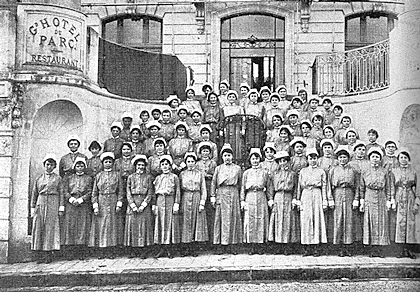
A church in Châtel-Guyon hides a major surprise
Since the war-time hospital operated out of hotels and other makeshift facilities, you won’t find any traces in the modern town. Before you leave Châtel-Guyon, though, make sure you make your way up to the little church at the base of Calvary Hill. It’s called the Eglise Saint-Anne, it’s relatively new (1845) by French standards, and it’s exceedingly plain on the outside…
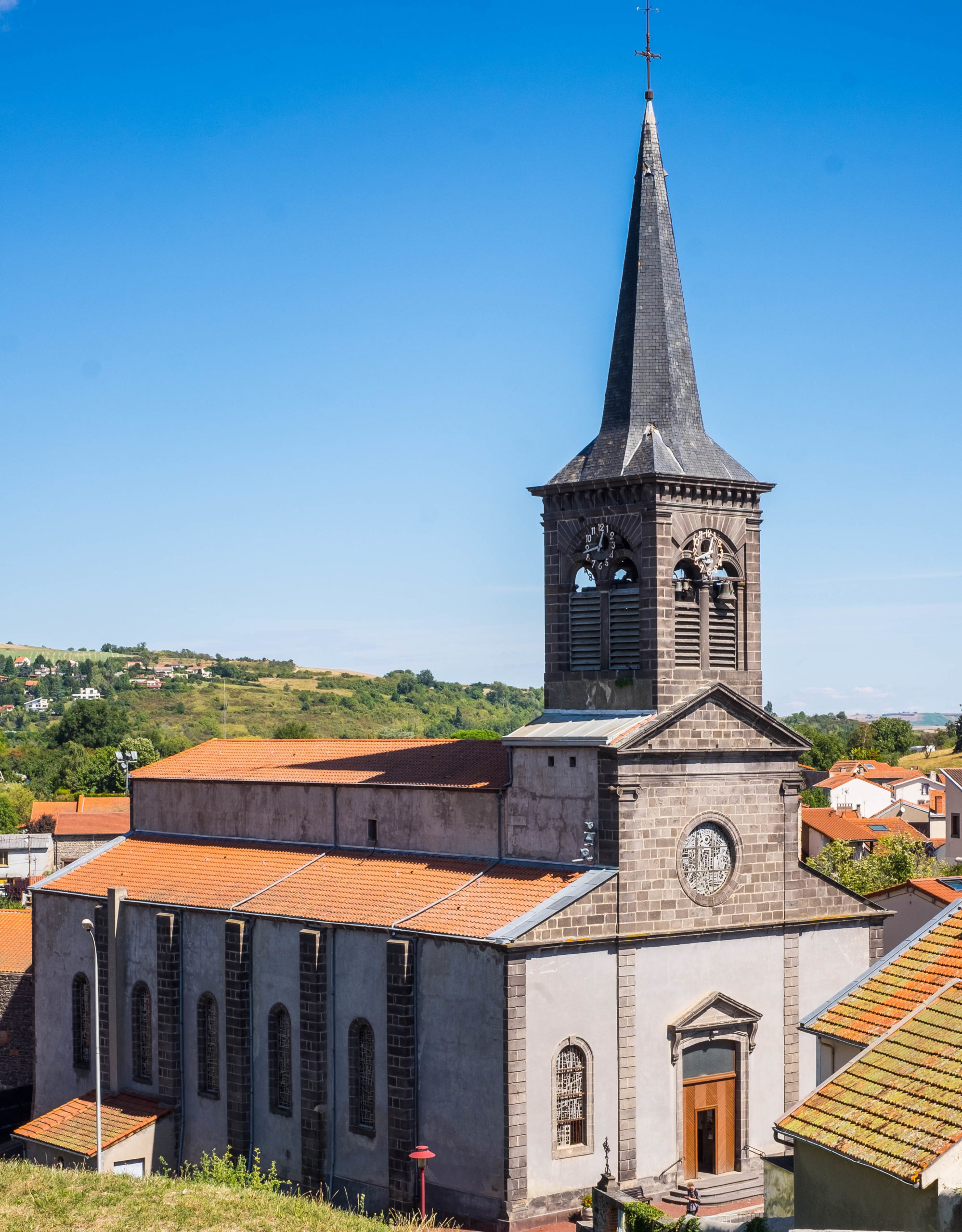
But step inside and grope around in the darkness until you find the green button on the wall…and the place explodes in luminous colors and extraordinary images! In the unusually hard winter of 1956, the Estonian painter Nicolaï Greschny came here at the request of the local Canon, and proceeded to cover more than 900 square meters of walls and ceilings with his art.
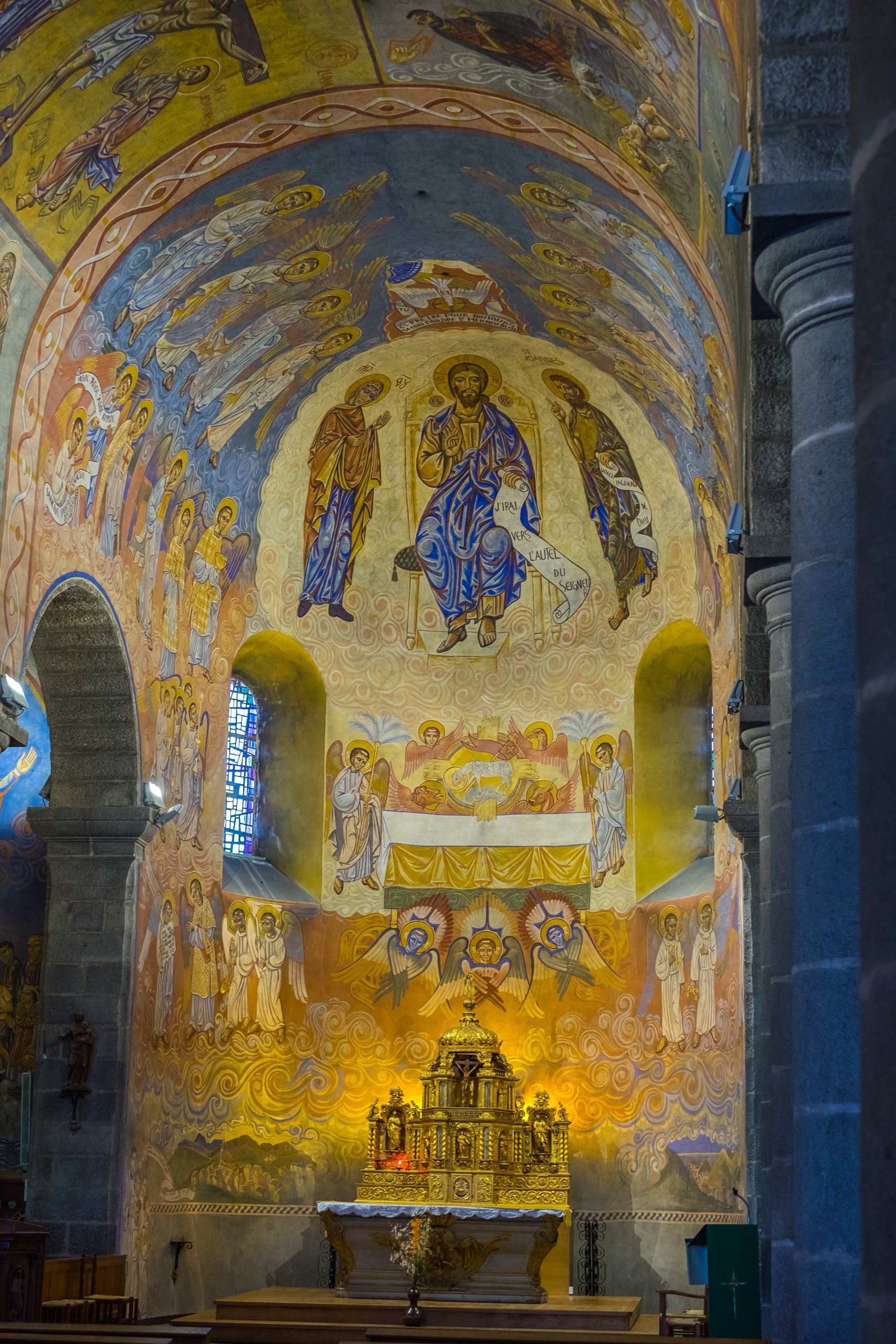
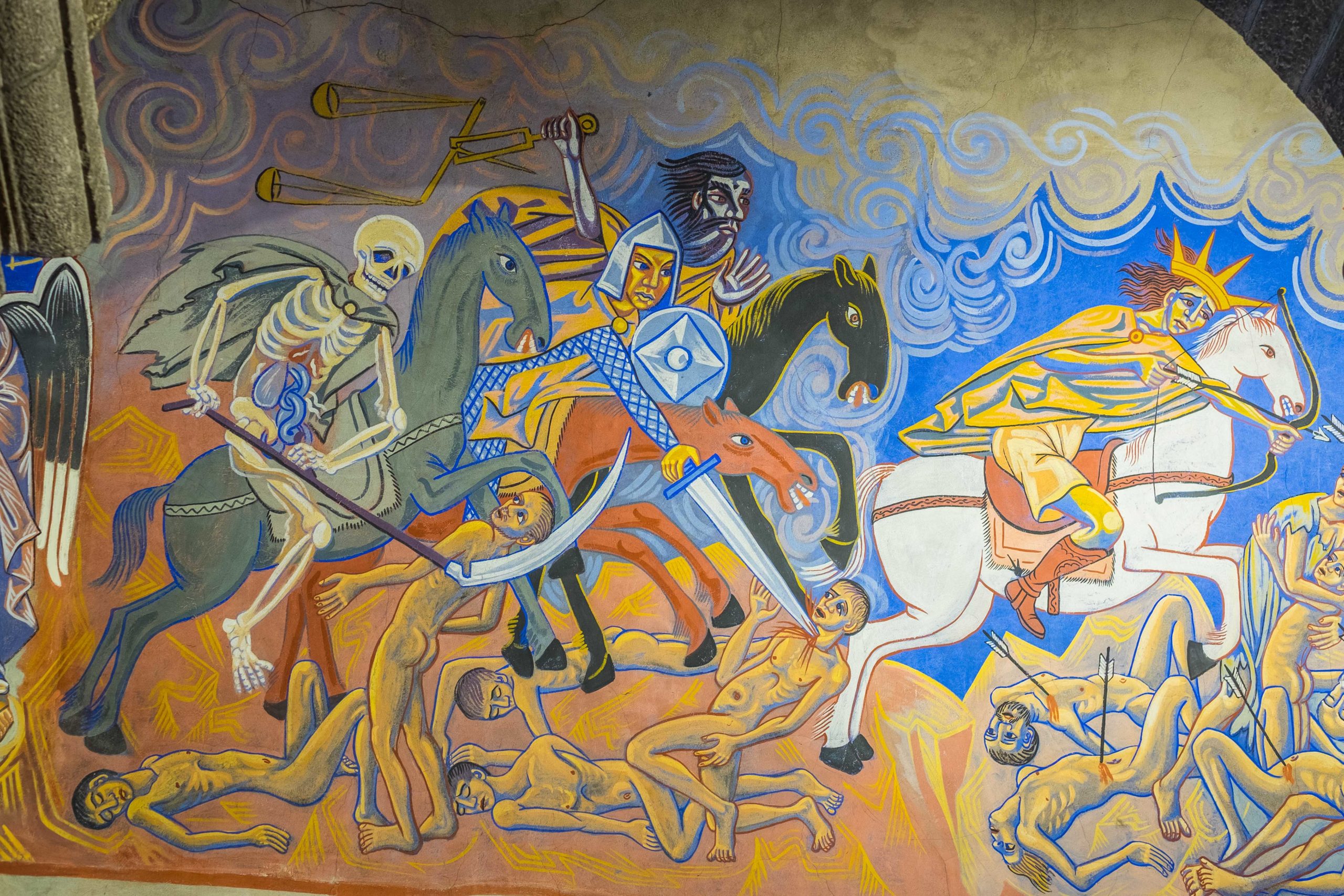
Working entirely without models or sketches, he laid out great scenes from the Bible – the creation of Adam, the expulsion from the Garden of Eden, the ascendancy of Christ – in glittering, earthy detail. I’ve seen hundreds of churches in my travels around France, but never one that struck me in the way this one does!
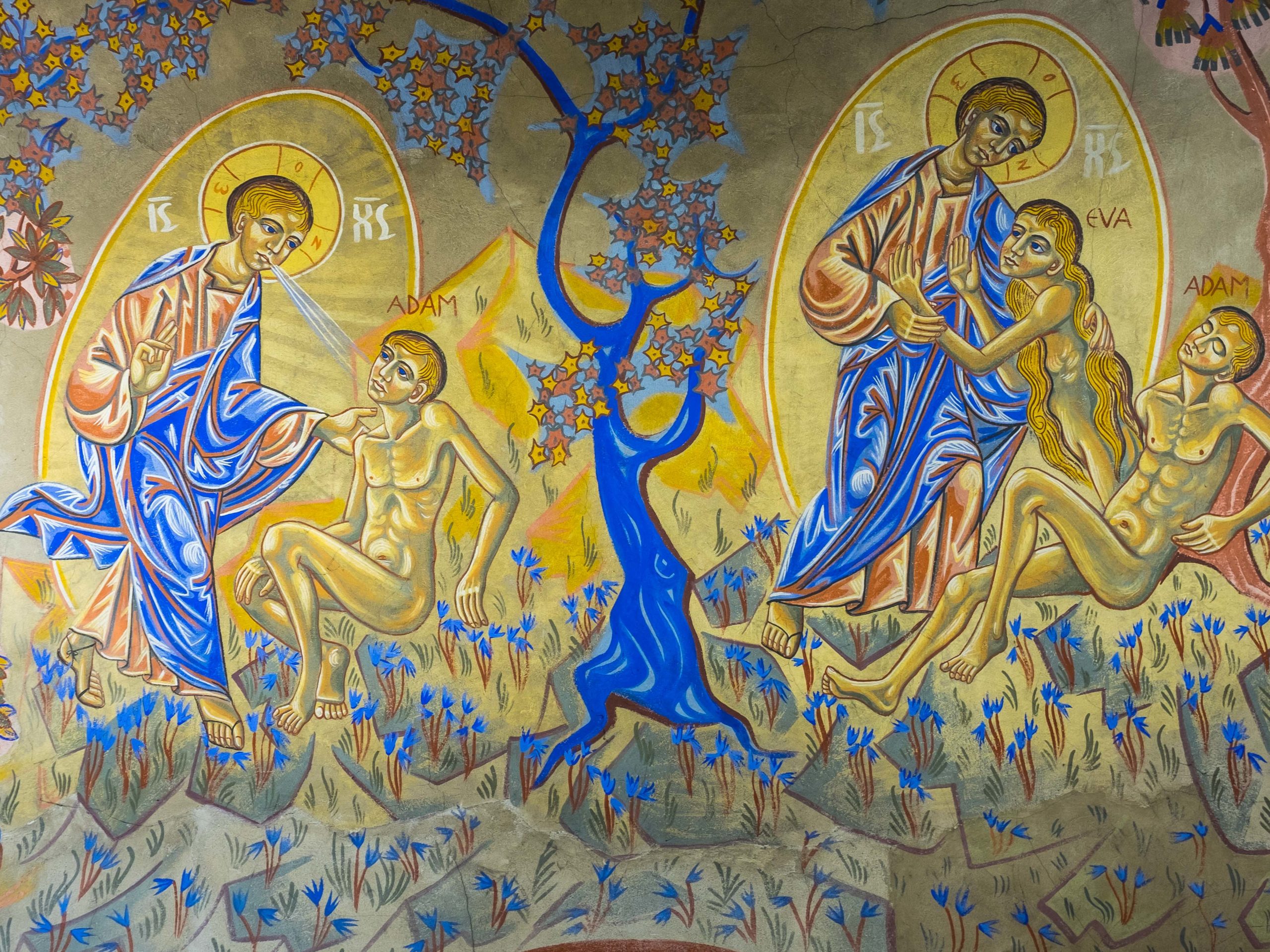
Gateway to the "Parc des Volcans"
Châtel-Guyon is only about 12 miles north of the urban center at Clermont-Ferrand, but as my old boss made it clear, it feels light years away. All the hiking, paragliding, and camping associated with this wilderness area of France are easily accessible – and if you’re exceptionally hardy, you can even retrace the mountainous 13th stage of the Tour de France on your bicycle (!) Plenty of interesting and important historical sites are nearby – the Chateau de Tournoel, the “most beautiful villages” at Usson and Montpeyroux, and some of Gustav Eiffel’s bridges, to name only a few.
My Sunday visit to Châtel-Guyon coincided with the regular street market in the center of town, and I joined in with a crowd of young couples, hipsters, and people who looked as if they have been living here forever. Traditional foods and fresh produce filled up the counters of the booths; children ran through the central square where the “crowned heads of the world” once strolled. Parts of this place’s former glories are a little faded in places – that’s true – but Châtel-Guyon is clearly a town with an interesting, charming present and a plan for an even more inviting future!
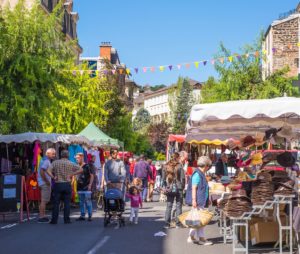

Have you ever visited one of the stops along the Tour de France during the race? Was it worth braving the crowds? Do you have other favorite places in the Deep Heart of France? Please share your experiences in the comments section below – and please pass this post along to someone else who is interested in the places, the people, the history, and the culture of central France.
Unless otherwise noted, all photos in this post are copyright © 2019 by Richard L. Alexander.
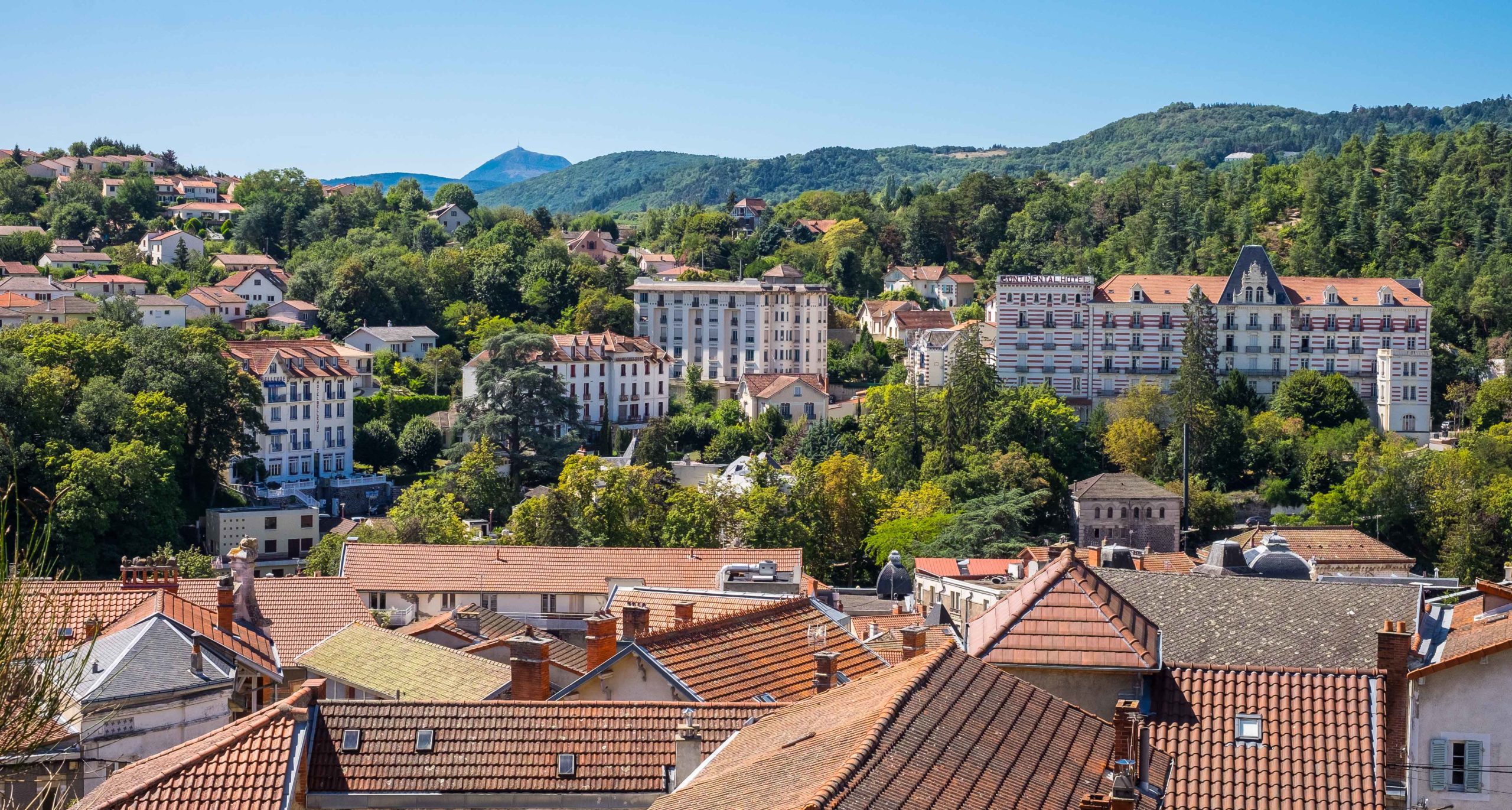
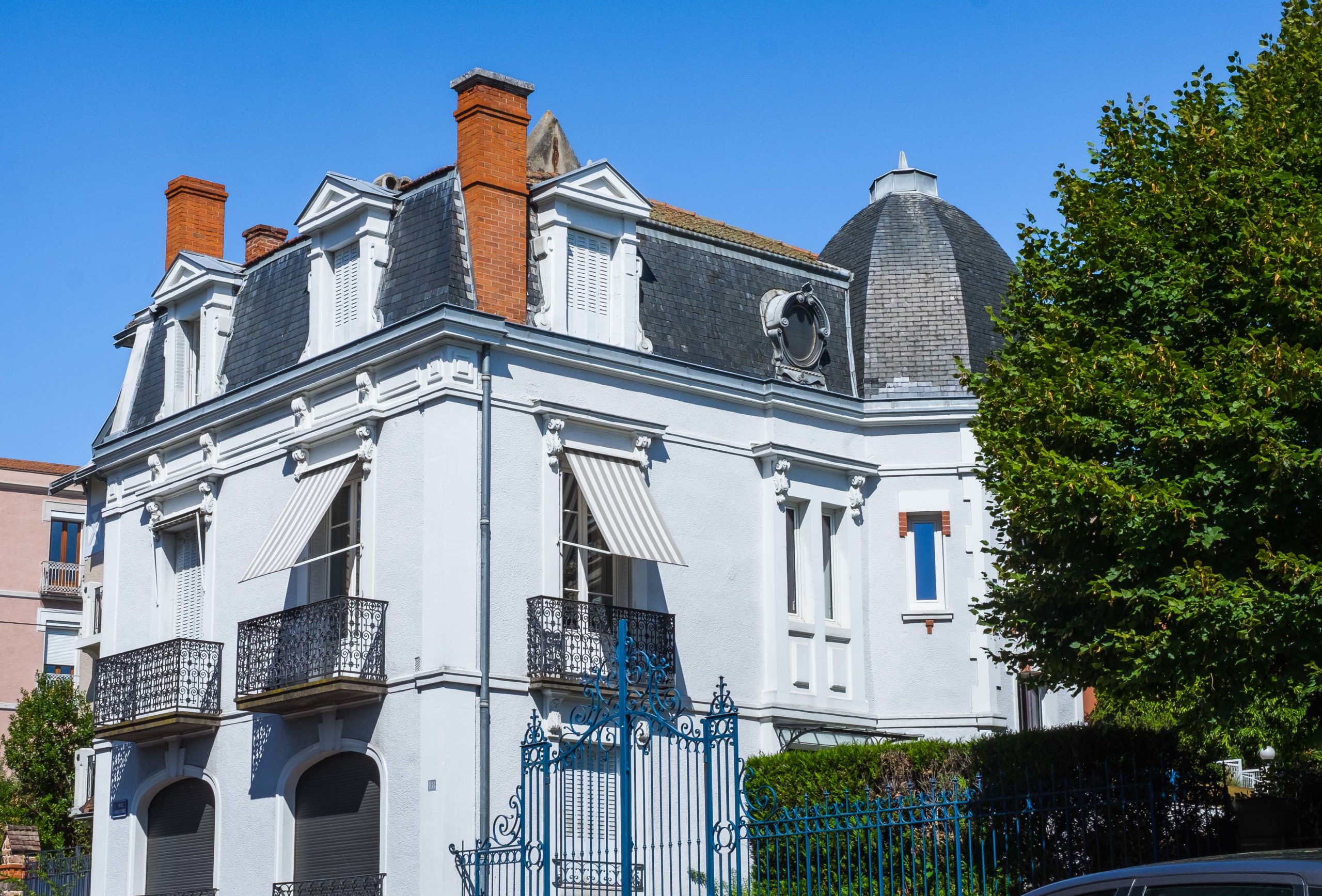
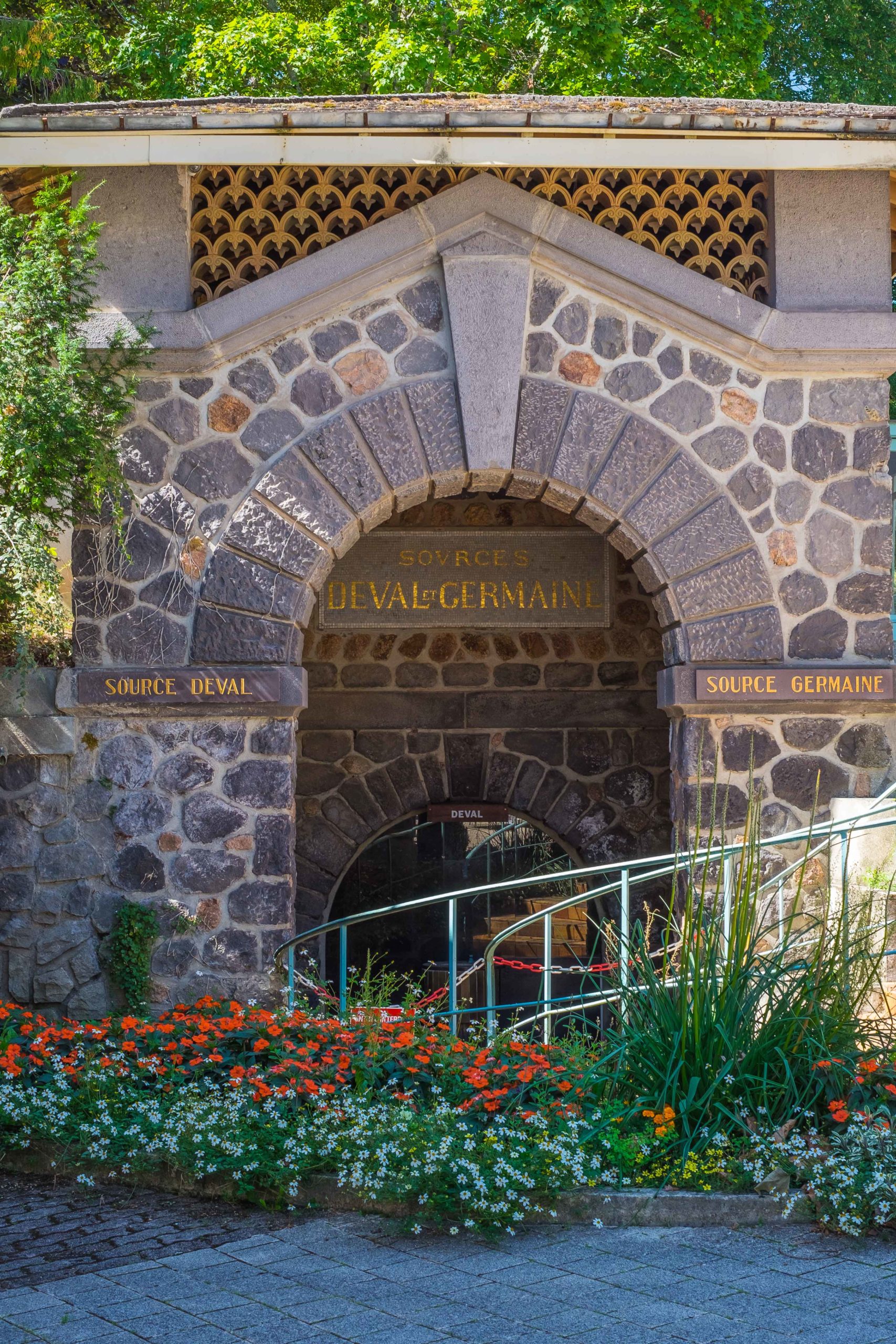
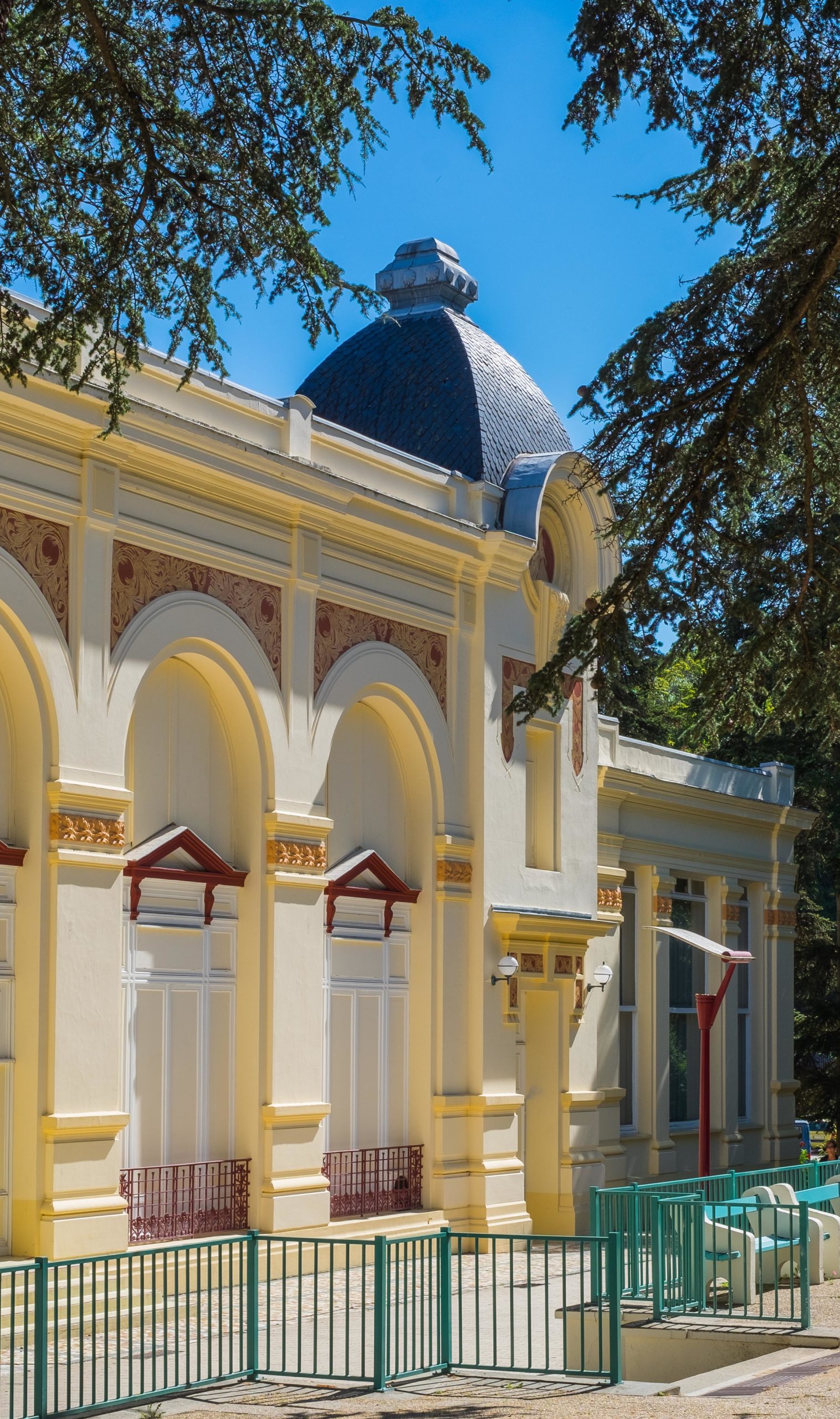
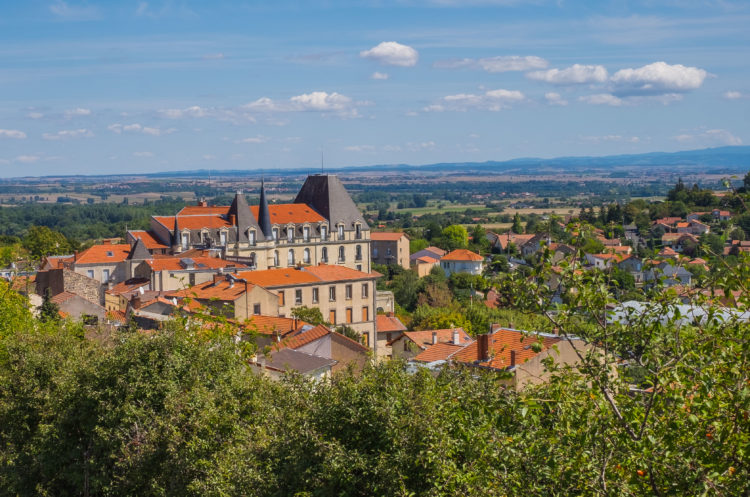

Another interesting and informative read. Thanks, Richard.
And if you are asking about favourite places in the deep heart of France, how about Le Puy en Valay?
Yes! It’s an extraordinary medieval city with great historical importance and some of the most interesting architecture to be found anywhere in central France! I’ve written about it here (https://www.deepheartoffrance.com/you-must-see-le-puy-en-velay-a-medieval-treasure-on-the-pilgrims-route-to-compostella/), but I’ll be going back later this year to add more to the discussion. Thanks very much for the suggestion!
We’ll be in our old/hew home near La Bourboule (Puy-de-Dome) for three months–August through October–and have lots of two-day walks planned. Hope to meet some of you. And, yes, I’ll be somewhere along the road watching the Tour de France riders go by during the Auvergne leg on September 11 (probably in or near La Tour d’Auvergne). Exciting!!
Thanks for checking in Steven — hope your deconfinement continues to go well and that the Tour happens as planned — it’s a once-in-a-lifetime event!